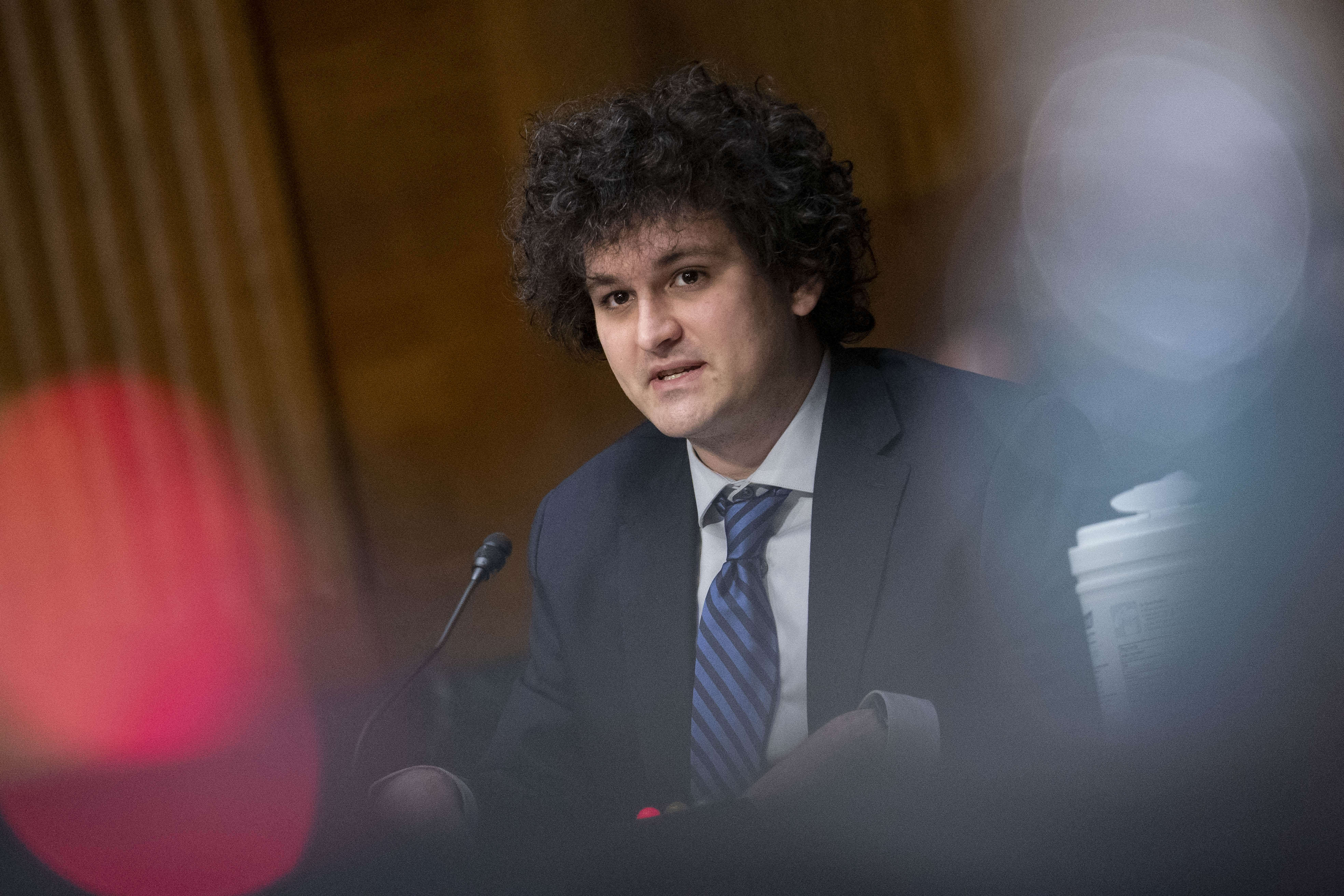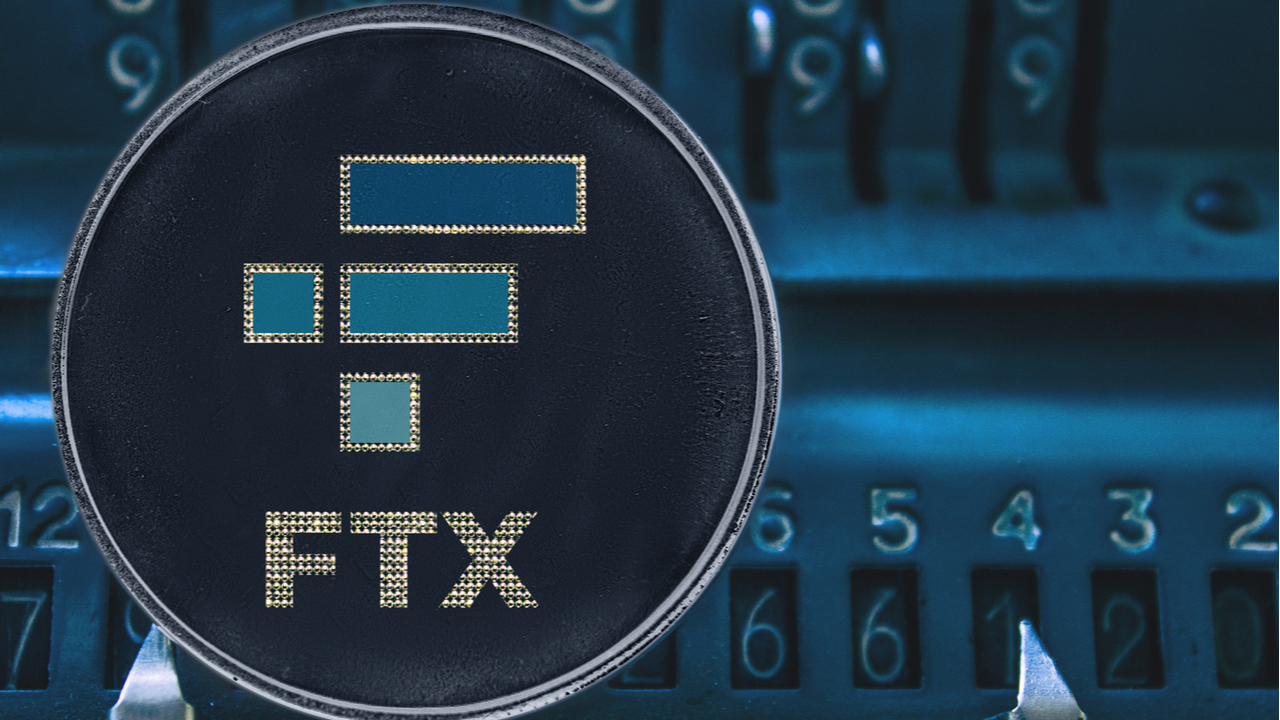FTX founder SBF talked about these key points at the US Senate hearing
FTX CEO Samuel Bankman-Fried (hereinafter referred to as SBF) participated in a hearing held by the U.S. Senate Committee on Agriculture, Nutrition and Forestry at 23:00 on February 9, Beijing time. The theme was "Examining Digital Assets: Risks, Regulation, and Innovation ” (Examining Digital Assets: Risk, Regulation, and Innovation). Other participants included Rostin Behnam, chairman of the U.S. Commodity and Futures Trading Commission (CFTC), and Sandra Ro, CEO of the Global Blockchain Business Council.
Rostin Behnam is pushing the CFTC to play a leading role in regulating digital assets, and SBF agrees with this, and discusses it from multiple angles, showing the importance of the CFTC playing an active role.
image description

secondary title
1. FTX operation status
Co-founded by Samuel Bankman-Fried, Gary (Zixiao) Wang, and Nishad Singh, FTX launched its international business in May 2019 and started its trading platform business in the United States in 2020. The FTX.com exchange has grown rapidly since its launch, and the current average daily trading assets on the platform have reached approximately US$15 billion, accounting for approximately 10% of the global encrypted trading volume.
FTX has been operating and licensed in dozens of jurisdictions around the world, including the United States and Europe, and has millions of registered users, of which the FTX US platform has about 1 million users (mostly from the United States), and the FTX.com platform About 45% of users on the website are from Asia, 25% from the European Union (EU), and the rest from other regions.
secondary title
2. Interpretation of blockchain energy consumption
FTX has always been committed to environmental protection and reducing its impact on the climate. First of all, FTX has no factories or physical products, so it does not use the global transportation network and is a low energy consumption enterprise. At the same time, FTX has a small number of employees and a small physical office. It adopts a global distributed office and online operation model, which will not have a direct impact on climate change on a global scale.
Second, while depositing and withdrawing digital assets on the FTX platform consumes a small amount of energy, in practice 80% of deposits and withdrawals are made using the low-cost, carbon-efficient Proof-of-Stake (PoS) blockchain.
Third, FTX worked hard to cover the mining environmental costs associated with public blockchains and purchased carbon offsets to offset them.
secondary title
3. FTX's product matrix and its role in the digital asset economy
Digital asset trading platform:
FTX's core offerings are its digital asset exchanges, FTX.com, FTX.us, and FTX US Derivatives (Note: FTX.us and FTX US Derivatives are merging). On FTX.com and FTX.us, users can trade digital assets with other users for cash, stablecoins, and other digital assets.
Futures and volatility contracts related to digital assets are also available on the trading platform. FTX.com offers cash-settled quarterly settlement (and perpetual) futures contracts with a leverage limit of up to 20x (i.e. a minimum margin of 5%) and lower in most cases, while FTX.us does not support leveraged trading.
FTX has listed about 100 stablecoins and other digital assets on the spot trading platform, including Bitcoin (BTC), Ethereum (ETH), Uniswap Protocol Token (UNI), Chainlink Token (LINK), Solana (SOL), Aave ( AAVE) etc.
Lending business:
Users of the FTX platform can lend digital assets to those who are looking for spot transactions. Users can post collateral in the form of cash, stablecoins, or other digital assets held in their accounts, and then submit borrowing requests to those who are willing to lend digital assets . The FTX platform maintains a ledger of borrow/loan transactions and matches users who want to borrow with those who are willing to lend.
NFT market:
FTX is also operating a market for users to mint, buy, and sell NFTs. Users can choose to display their NFT collections on the FTX NFT market and conduct trading transactions, as well as purchase NFTs listed by sellers.
FTX Pay:
FTX Pay is a service provided to merchants to accept payments in digital assets or fiat currencies.
Staking (pledge interest):
secondary title

4. The regulatory landscape of digital assets and the role of CFTC
At present, when the United States regulates digital asset transactions, it uses a combination of federal market regulations and state-level currency exchange laws, which actually increases the business difficulty of digital asset platform operators and hinders the process of optimizing risk management.
As an example, FTX US offers "cash" or "spot" markets as well as derivatives markets through FTX US Derivatives, but each is handled differently by regulatory legislation.
For the U.S. spot trading market, if a digital asset is a security as defined in the Securities Act of 1933, the digital asset is subject to the jurisdiction of the U.S. Securities and Exchange Commission (SEC), and the asset and any platform that trades it must generally be listed on the SEC. register.
However, digital assets that do not meet the definition of a security under U.S. law generally still meet the definition of a “commodity” under the Commodity Exchange Act (CEA). Historically, the Commodity Futures Trading Commission (CFTC) has generally not exercised jurisdiction over the operation of commodity physical markets (with a few exceptions). Therefore, FTX believes that under certain circumstances, the CFTC can exercise jurisdiction over the digital asset spot market.
In fact, at present, operators of encrypted trading platforms in the United States are not only regulated by the SEC and CFTC. Many states believe that digital asset platforms operating locally should comply with the supervision of local fund transfer regulations and also need to obtain permission from state regulators. However, these local laws do not With federal market regulation and its principles of market integrity and investor protection.
For the derivatives market in the United States, if the digital asset mentioned in the contract is a commodity rather than a security, the derivatives transaction of the digital asset is under the jurisdiction of the CFTC. Currently, the CFTC oversees BTC and ETH derivatives trading on several US trading platforms, including FTX US Derivatives.
FTX believes that there are many other digital assets that are not securities, and therefore derivatives of these digital assets will also fall under the jurisdiction of the CFTC and can be listed through a properly registered platform (such as FTX US Derivatives).
Due to the unclear regulatory responsibilities of CFTC and SEC, there are loopholes in federal market regulation:
First, the CFTC’s jurisdiction does not apply to all cash markets for (non-securities) digital assets, so U.S. customers of these market operators do not enjoy legal enforceability, market integrity, and investor protection requirements; The assets all meet the definition of securities under U.S. law, resulting in no clear, consistent and enforceable disclosure standards to inform investors of key information to assess the risks associated with these digital assets. That said, there is no clear market oversight of spot trading of (non-securities) digital goods.
In fact, the SEC has not given a clear definition of whether digital assets are "securities", which has affected participation in the US digital asset market, and entrepreneurs, institutional market participants and other investors are reluctant to enter the US market.
It is estimated that 95% of the trading volume on the FTX platform occurs in non-US regions, and many people have left the United States to establish and grow their businesses. FTX believes that the current state is not conducive to the United States to maintain competitiveness and cannot obtain the benefits of the growing digital asset industry, including attracting more high-quality capital, excellent global labor force, intellectual property rights and tax revenue.
In addition, there are currently hundreds of billions of dollars of digital asset stablecoins backed by the U.S. dollar (anchor assets), and clear and consistent regulatory guidelines can maintain the dominance of the U.S. dollar.
In terms of stable currency regulation, stable currency has become an important part of the global and US digital asset ecosystem. It is often used to transfer collateral between digital asset platforms, and it is also used as collateral on some trading platforms. . At present, the U.S. market also has the "patchwork problem" discussed earlier in the regulatory handling of stablecoins.
secondary title
5. CFTC's vision as a digital asset regulator
The CFTC already has extensive experience and expertise in the regulation of digital assets, and FTX believes that this expertise should be used to benefit the public and the digital asset industry.
The fact that the CFTC approved the listing of the first BTC derivatives contract eight years ago, and that the FTX US Derivatives business, the first CFTC-approved crypto-native platform, has been licensed and regulated by the CFTC, demonstrates that the CFTC has been growing digitally over the years. A lot of work has been done on the asset side.
Congress should actively consider how the CFTC can better provide market integrity and investor protection, and ensure that the United States can maximize the benefits of industry growth, as follows:
Expanding CFTC’s Jurisdiction Over Spot Trading of Digital Assets: FTX proposes to expand the CFTC’s jurisdiction to at least include all spot transactions of (non-securities) digital assets involving retail investors, whether or not those transactions are currently subject to CEA Section 2(c)( 2) CFTC Jurisdiction under Section (D).
Congress should encourage the CFTC to work with industry to allow retail commodity trading contracts related to digital assets to be listed with the CFTC after registration, and the agency empowers those transactions under Section 2(c) of the CEA.
Congress could eliminate the 28-day "actual delivery" period in the CEA associated with digital asset transactions, as doing so would clearly bring the full protections of the CEA to more of these retail transactions, which FTX believes would also clearly advance the public interest.
Congress could amend the CEA more broadly so that the CFTC has jurisdiction over all (non-securities) digital asset spot trading activities, not just retail commodity trading under CEA section 2(c)(2)(D), and derivative Products involving (non-securities) digital assets.
Congress in general should actively encourage the CFTC to appropriately expand its interpretation of its authority over digital asset spot transactions to better streamline and compress regulations governing U.S. digital asset activity.
As suggested by FTX's Key Principles for Market Regulation, Congress, the CFTC, and the SEC should develop a plan that would allow digital asset platform operators to opt-in to a joint CFTC and SEC regulatory program in the event of shared jurisdiction over digital assets.
Embrace the Direct-Membership Market Structure of Digital-Asset Platforms. The CFTC should continue to allow and accept a market structure that allows investors to become direct members of CFTC-licensed exchanges and clearinghouses that offer digital assets, without intermediary participation.
Under the market structure of CFTC-regulated business, FTX has been operating for nearly 5 years without any loss of customer funds or major platform interruptions, and has proved that this business model can comply with CEA and continue to serve important investors CEA The protective measures embodied.
FTX has released key principles for investor protection on digital asset platforms, including:
● Maintain sufficient liquidity resources to ensure that the platform can return customer assets as required;
● Ensuring a secure environment for custody of client assets, including digital wallets;
● ensuring proper books or ledgers of assets and disclosures to prevent misuse or misallocation of client assets;
● ensuring that risks are properly managed, including market, credit/counterparty and operational risks;
● Avoid or manage conflicts of interest.
While CFTC rules already reflect the above principles, they often consider intermediaries such as "futures commission merchants" to assume these protection responsibilities to investors, but in fact, as long as these investor protection measures are ensured and enforced, CFTC can support and adopt better market structure.
In terms of ensuring the safety and soundness of stablecoins, although the "Report on Stablecoins" recently released by the President's Financial Market Working Group requires stablecoin issuers to comply with regulations similar to those of banks, as long as the core requirements of stablecoin regulation are met, some regulations Measures are not necessary, such as:
● Provide proof of assets (cash, bonds, etc.) supporting stablecoins on a daily basis;
● Regularly review and confirm the asset backing situation to determine whether the actual situation is consistent with the stablecoin issuer’s claim
● Stablecoin assets are supervised and inspected by federal agencies;
● Law enforcement blacklists addresses and people associated with financial crimes.
The CFTC can play an important role in creating a workable framework with these requirements for two main reasons:
● First, Congress could have the CFTC authorize stablecoin issuers and subject them to core regulatory requirements, such as creating and authorizing a new registration program for stablecoin issuers, or allowing them to seek existing CFTC licenses. Taking the DCO license as an example, the license covers asset custody, providing relevant reports, accepting relevant audits, and managing risks through proper collateral management and market marking, which are roughly the same duties that stablecoin issuers need to comply with.
● Second, protect the safety and soundness of the broader financial system by creatively leveraging the CFTC's existing authority to develop a broad range of public policy to standardize practices for stablecoin issuers. There is an urgent need to create a practical regulatory solution that promotes disclosure and transparency without inhibiting stablecoins from providing value to market participants. All aspects of digital asset regulation will be iterative and phased. For stablecoins, enacting general principles-based disclosure and transparency requirements now would bring substantial regulatory value.
To sum up, FTX believes that the CFTC can play a more prominent role in the digital asset ecosystem and supplement some past regulatory loopholes to provide investors with greater and more comprehensive protection.



